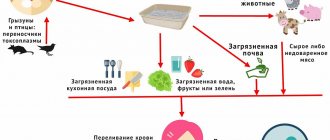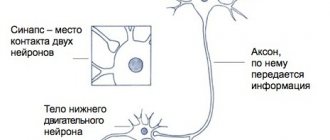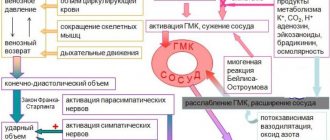HIV encephalopathy
is a complication of the human immunodeficiency virus (HIV) that results from inflammation of the brain. This can affect both the volume and structure of the brain, potentially resulting in a variety of mental health symptoms and cognitive impairment. Other names for HIV encephalopathy include:
- HIV-associated neurocognitive disorder
- HIV-associated dementia
- Complex "AIDS-dementia"
The last two names refer to the fact that this condition can cause cognitive decline and lead to dementia.
There is currently no specific treatment for HIV encephalopathy. However, antiretroviral therapy can control the disease and slow its progression.
What is HIV encephalopathy?
HIV is a virus that attacks and weakens the immune system, which can increase the risk and impact of potential complications. One such complication is HIV encephalopathy. This usually occurs due to the effects of a virus or opportunistic infections such as toxoplasmosis on the brain.
HIV encephalopathy usually appears when HIV reaches its final stages, so it can appear many years after infection. This condition is more common in people who are not taking effective HIV medications and those who have very low counts of CD4 cells, a type of white blood cell that fights infections. HIV encephalopathy is less common in people who receive early and ongoing treatment.
The immune system
In order to understand how the human immunodeficiency virus (that’s what HIV stands for) destroys the immune system, you first need to understand what it is - the immune system. According to one of the definitions (according to R.V. Petrov), immunity is a way of protecting the body from living bodies and substances that carry signs of genetic foreignness. Simply put, immunity is what protects us from bacteria, viruses, any high-molecular foreign substances (remember immunity against snake venom) that enter the body, as well as cancer cells. It is based on phagocytes (called macrophages in animals), which actually destroy (absorb) foreign bodies, as well as T- and B-cells of the immune system, which carry out the precise “guiding” of phagocytes towards the pathogen. When a microbe enters the body, phagocytes absorb and digest it [29].
Primary enemy recognition occurs through Toll-like receptors, or TLRs [30]. These molecules recognize structures common to many classes of pathogens, but absent in humans (for example, TLR5 recognizes the protein flagellin, the main component of bacterial flagella, and TLR3 is activated by the presence of double-stranded RNA, which appears in the life cycle of many viruses, in particular the influenza A virus ). After the microbe is absorbed, its remains are “showed” (presented) to T-helper cells. T-helper cells are activated, and in turn help B-lymphocytes to activate (the latter require pathogen molecules and activation signals from T-helper cells for activation). After this, the B lymphocytes turn into plasma cells and begin the synthesis of antibodies - immunity molecules that mark substances similar to those that activated the B lymphocytes. Antibodies circulate in the bloodstream and mark the structures of the pathogen. Marked microbes and other foreign bodies are absorbed by phagocytes more efficiently.
This “scenario” works when the microbe is outside the body’s cells (in the case of infection with most bacteria and fungi). If the enemy penetrates inside the cell (viruses, some bacteria, protozoa), as well as when the body cell itself becomes hostile (in the case of cancer), T-killers come into play. They find and destroy infected cells, after which the remains of these cells are absorbed by the same phagocytes. Killer T cells require helper T cells to activate. In addition to T-killers, antibodies (and, accordingly, B-lymphocytes) are involved in this “scenario”, but their role is less than that of T-killers. Of course, there are other participants in immunity, but the main emphasis in the fight against HIV falls on those mentioned above.
Figure 1. Simplified diagram of the immune response. Lightning bolts indicate how one cell type activates others. Mf - macrophage, B - bacterium, TX - T-helper, BCl - B-cell, PlCl - plasma cell, At - antibodies, B+At - bacterium covered with antibodies that attract macrophages, B - virus, ZMf - infected macrophage, TK - T-killer, ZK - cell infected with a virus, UK - dying (apoptotic) cell, B+Ab - virus coated with antibodies.
drawing by the author of the article
HIV encephalopathy - causes
Researchers still do not understand exactly the mechanism that causes the development of HIV encephalopathy. However, most evidence suggests that it is due to inflammation and damage that occurs when the virus crosses the blood-brain barrier and infects the brain. Some evidence also suggests that HIV can mutate in the brain, making it different from the virus circulating in the rest of the body. This may cause some treatments to be less effective.
Routes of HIV infection
Attention! Due to the fact that AIDS is a sexually transmitted disease, the information provided in this section may offend you or cause unpleasant emotions when reading it. Be careful.
Figure 3. Routes of HIV entry into the body through sexual contact. On the left is the approximate time frame for each stage.
[6]
How does a person become initially infected with HIV? I think that with a blood transfusion or using a shared syringe when using drugs, everything is clear to the reader - the virus is delivered directly from infected blood to healthy blood. With the vertical method of transmission of infection (from mother to child), infection can occur during fetal development, at the time of birth or during breastfeeding (since the virus and virus-infected cells are contained in mother’s milk) [17], [20] . However, even a child born to an HIV-infected mother has a chance to remain healthy, especially if the mother uses HAART (highly active antiretroviral therapy) [5]. Why do people become infected through sexual contact?
The mechanisms of transmission of the virus during sexual intercourse are not entirely clear. However, they are understandable in general terms. So, let's look at the barriers that the virus needs to overcome in order to get to macrophages and T-helper cells. Unfortunately, there is nothing special to consider: there is only one barrier - a layer of epithelial cells and the mucus they produce, located in the vagina (as well as the penis, rectum, pharynx). This barrier is thin - it can be only one cell thick - but it is difficult for the virus to overcome, as evidenced by a relatively small percentage of infections - approximately 1-2 cases per 100 sexual contacts. So, how does the virus overcome this obstacle?
The most obvious mechanism is microtrauma. During normal sexual intercourse, and especially during anal sex, microcracks almost inevitably appear; in the presence of sexually transmitted diseases, ulcerations of the mucous membrane often occur. Through these microtraumas, the virus contained in semen and vaginal secretions can penetrate immunocompetent cells [17], [20].
But even in the absence of microtrauma, HIV can enter the body through dendritic cells (types of macrophages), which can release their processes into the lumen of the mucosa. There they capture viruses and bacteria, after which the captured material is presented to T helper cells. In this way, the body prepares to “warmly welcome” the microbes present in the environment. But in our case, dendritic cells only become infected with the virus - directly with free virions or through contact with infected lymphocytes that may be present in sperm (the total number of lymphocytes in sperm is up to 1 million/ml or more).
In addition to dendritic cells, there is another type of cell in the intestine designed to familiarize the body with environmental antigens. These are the so-called M-cells, which allow fairly large objects to pass through undamaged from the intestinal lumen. Incl. The HIV virion can also pass through them.
The pro-inflammatory process, which is normally present in the female genital tract due to the presence of sperm in it, also contributes to the infection. Thanks to it, T cells are subject to activation, which contributes to their susceptibility to infection.
So, the risk of contracting HIV increases in the following order (Classic sex → Anal sex → blood transfusion / sharing syringes when taking drugs). As for oral sex, only the receiving party has a very small chance of becoming infected - saliva, and especially gastric juice, inactivates HIV. Theoretically, a man can also become infected this way, but this requires wounds on the penis.
The virus is not transmitted through kissing and ordinary household contacts - it is very unstable in the environment.
For information on how to behave so as not to become infected with HIV, and what to do if this does happen, read the article “Bound by the Same Ribbon” [33]. - Ed.
HIV encephalopathy by stages
The World Health Organization (WHO) lists HIV encephalopathy as a symptom of the final stage of HIV.
It is also the most severe of the three stages of HIV-associated neurocognitive disorder:
- Asymptomatic neurocognitive impairment
: This form has no symptoms of cognitive decline. - HIV-associated mild neurocognitive disorder
: Mild symptoms of cognitive impairment may occur. - HIV encephalopathy
: presents with severe symptoms of cognitive decline.
HIV encephalopathy - diagnosis
Diagnosing HIV encephalopathy is difficult because many factors can contribute to symptoms. These include:
- nutritional deficiency
- depression
- side effects of medications
- opportunistic infections
Doctors may use the following diagnostic tests to make a diagnosis:
- mental status tests
- neuropsychological testing
- basic tests of physical ability or movement
- MRI scan
- CT scan
- blood tests
- cerebrospinal fluid tests
Treatment of HIV encephalopathy
Without treatment, HIV encephalopathy can be fatal. Evidence suggests that no specific treatment can cure all complications of HIV encephalopathy. People may need different medications, such as opioids, anticonvulsants, antidepressants, and antiretroviral therapy, to treat different symptoms.
Antiretroviral therapy is the main treatment for HIV. This is a combination of drugs that reduces the amount of virus in the blood. Research suggests that drugs can reverse some of the damage that occurs as a result of HIV encephalopathy, potentially improving scores on tests that measure thinking skills.
An article published in 2021 describes antiretroviral therapy as the most effective treatment for HIV encephalopathy, noting that treatment reduces the prevalence of severe cases. Treatment effects:
- reversing some brain damage from HIV
- improved results of neuropsychological and cognitive tests
- delaying the onset of symptoms indicating brain damage
However, the effectiveness of antiretroviral therapy for milder forms of HIV-associated cognitive decline is unclear. The lack of evidence is due to the fact that cognitive difficulties in such cases are minor, so they sometimes go undiagnosed.
Ways to destroy the immune system
Let's now move on to how the virus destroys the immune system. Basically, it all comes down to the activation of programmed cell death, or apoptosis, in T cells (Normally, apoptosis is activated in cells that are defective or not needed by the body - for example, in the cells of the tail of a human embryo. Most potential cancer cells die by apoptosis. Moreover, if a cell “senses” infection by a virus using TLRs, it will try to die again through apoptosis (although almost all viruses have mechanisms to block it)). The production of the virus itself does not pass unnoticed for the T-helper, and over time it dies. The reasons for this are not fully understood, but several possible reasons can be identified.
When budding, the virus uses the cell membrane of the cell, and over time this should cause its destruction. In addition, the viral protein Vpu causes an increase in the permeability of the cell membrane [6]. When the virus is activated, double-stranded DNA that is not integrated into the genome appears in the cell [19], the presence of which can be considered by the cell as damage to its genetic material and induce its death through apoptosis (From the body’s point of view, such a cell can potentially become cancerous). In addition, viral proteins directly disrupt the balance of pro- and anti-apoptotic proteins in the cell. For example, the viral protease p10 can cut the antiapoptotic factor Bcl-2. The proteins Nef [26], Env [22] and Tat [24] are involved in an increase in the amount of cellular proteins CD95 and FasL, which serve as inducers of apoptosis, so-called. Fas-mediated pathway. The Tat protein positively regulates caspase 8 [2], a key factor in the induction of apoptosis.
If the cells do not die themselves, they are actively destroyed by T-killers. (This is a standard immune response to infection with any virus.)
In addition, during the production of gp120 and Tat, some of them are released into the bloodstream by the infected cell, and this has a toxic effect on the body [4], [28]. gp120 settles on all CD4+ cells (including healthy ones), which has three consequences:
- The CD4 protein is important for the interaction of the T-helper with the phagocyte, but when CD4 adheres to gp120, the T-helper ceases to perform this function.
- Antibodies are formed against gp120 as a foreign protein; After gp120 settles on healthy cells, the latter are marked with antibodies, and the immune system destroys them [9].
- After abundant binding of gp120 by the T helper cell, the cell itself dies. The fact is that CD4 is a coreceptor. It enhances the signal from TCR (T-cell receptor), the main protein that allows T cells to perform the immune function. Normally, these receptors are activated together. If one type of receptor is activated but not another, this is a signal that something has gone wrong and the cell dies through apoptosis.
Antibodies designed to prevent infection, in the case of HIV, often, on the contrary, enhance it [28]. Why this happens is not entirely clear. We discussed one reason above. Perhaps the fact is that antibodies cross-link several viral particles together, and not just one, but many viruses enter the cell at once. In addition, antibodies activate immune cells, and in an activated cell, viral proteins are synthesized faster.
In addition, gp120 and gp41 have regions similar to those of several proteins involved in immunity (e.g., MHC-II [25], IgG [23], complement component Clq-A [14]). As a result, antibodies are formed in these areas that, in addition to the virus, can mark completely healthy cells (if they contain these proteins), with corresponding consequences for them.
Since gp120 appears on the surface of the infected cell, it, like the viral particle, will merge with other CD4-containing cells, forming a huge multinucleated cell (syncytium), unable to perform any functions and doomed to death.
In fact, in addition to T-helper cells, CD4 is contained in many other cells - killer T-cell/T-helper precursors, dendritic cells, macrophages/monocytes, eosinophils, microglia (the last four are types of phagocytes), neurons (!), megakaryocytes, astrocytes, oligodendrocytes (the last two are cells that feed neurons), cells of striated muscles and chorioallantois (present in the placenta) [29]. All these cells are capable of becoming infected with HIV, but it is highly toxic only to T-helper cells. This determines the main clinical manifestation of AIDS - a strong decrease in the number of T-helper cells in the blood. However, for other cells, infection also does not pass without a trace - in patients with AIDS, blood clotting is often reduced, there are neurological and psychiatric abnormalities [16], and general weakness is observed.








